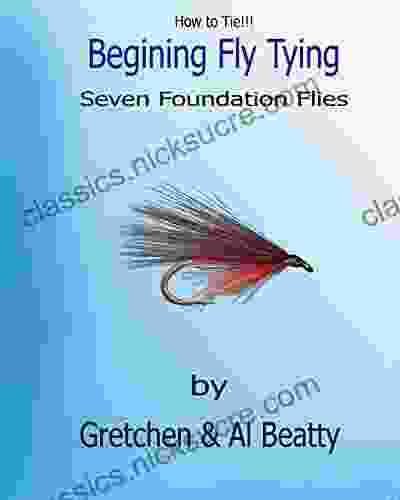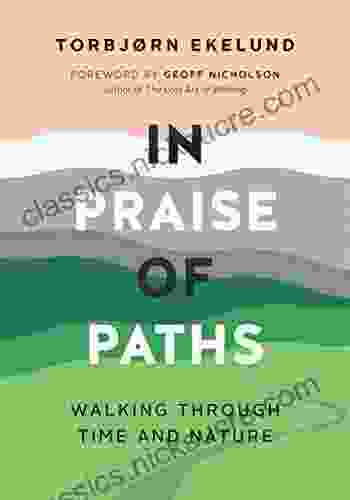The Ultimate Guide to Fly Tying for Beginners

Fly tying is an essential skill for any fly fisherman. It allows you to create your own flies, which can be tailored to the specific fish and conditions you're fishing for. Tying your own flies can also be a fun and rewarding hobby.
4.5 out of 5
| Language | : | English |
| File size | : | 2067 KB |
| Text-to-Speech | : | Enabled |
| Screen Reader | : | Supported |
| Enhanced typesetting | : | Enabled |
| Word Wise | : | Enabled |
| Print length | : | 66 pages |
| Lending | : | Enabled |
In this guide, we'll cover the basics of fly tying, including the tools and materials you'll need, the different types of flies you can tie, and step-by-step instructions for tying some of the most popular flies.
Tools and Materials
The following tools and materials are essential for fly tying:
- Vise: A vise is used to hold the hook while you're tying the fly. There are many different types of vises available, so choose one that is comfortable to use and that will hold the hook securely.
- Bobbin: A bobbin is used to hold the thread and to wind it around the hook. There are two main types of bobbins: rotary bobbins and spool bobbins. Rotary bobbins are more expensive, but they are easier to use and they provide more tension on the thread.
- Scissors: Scissors are used to cut the thread and the materials used to tie the fly. Choose a pair of scissors that are sharp and that are comfortable to use.
- Hook: The hook is the foundation of the fly. There are many different types of hooks available, so choose one that is the right size and shape for the fly you're tying.
- Thread: Thread is used to tie the materials together. There are many different types of thread available, so choose one that is the right size and strength for the fly you're tying.
- Materials: The materials used to tie the fly can vary greatly depending on the type of fly you're tying. Some common materials include feathers, fur, yarn, and wire.
Types of Flies
There are many different types of flies that you can tie, each with its own unique purpose. Some of the most popular types of flies include:
- Dry flies: Dry flies are designed to float on the surface of the water. They are typically used to imitate insects that live on the surface of the water, such as mayflies and caddisflies.
- Wet flies: Wet flies are designed to sink below the surface of the water. They are typically used to imitate insects that live in the water, such as nymphs and leeches.
- Streamers: Streamers are large, flashy flies that are designed to imitate baitfish. They are typically used to catch large predatory fish, such as trout and salmon.
- Saltwater flies: Saltwater flies are designed to be used in saltwater. They are typically made with durable materials that can withstand the harsh saltwater environment.
Step-by-Step Instructions
Now that you have the tools and materials you need, let's start tying some flies!
Tying a Wooly Bugger
The Wooly Bugger is a versatile streamer fly that can be used to catch a variety of fish. It is relatively easy to tie, making it a good choice for beginners.
1. Start by securing the hook in the vise. 2. Wrap the thread around the hook shank, starting at the bend of the hook and working your way towards the eye. 3. Tie in a small bunch of chenille at the bend of the hook. 4. Wind the chenille around the hook shank, stopping about halfway up the hook. 5. Tie in a bunch of hackle feathers at the front of the fly. 6. Wind the hackle feathers around the hook shank, making sure to keep them pointing backwards. 7. Tie off the thread and trim the excess.
Tying a Pheasant Tail Nymph
The Pheasant Tail Nymph is a popular wet fly that can be used to imitate a variety of aquatic insects. It is a bit more difficult to tie than the Wooly Bugger, but it is still a good choice for beginners.
1. Start by securing the hook in the vise. 2. Wrap the thread around the hook shank, starting at the bend of the hook and working your way towards the eye. 3. Tie in a small bunch of lead wire at the bend of the hook. 4. Wind the lead wire around the hook shank, stopping about halfway up the hook. 5. Tie in a bunch of pheasant tail fibers at the back of the fly. 6. Wind the pheasant tail fibers around the hook shank, making sure to keep them pointing backwards. 7. Tie in a bunch of dubbing at the front of the fly. 8. Wind the dubbing around the hook shank, making sure to keep it smooth and even. 9. Tie off the thread and trim the excess.
Tying a Royal Coachman Dry Fly
The Royal Coachman is a classic dry fly that can be used to catch a variety of fish. It is a bit more difficult to tie than the Wooly Bugger or the Pheasant Tail Nymph, but it is still a good choice for beginners who are looking for a challenge.
1. Start by securing the hook in the vise. 2. Wrap the thread around the hook shank, starting at the bend of the hook and working your way towards the eye. 3. Tie in a small bunch of lead wire at the bend of the hook. 4. Wind the lead wire around the hook shank, stopping about halfway up the hook. 5. Tie in a bunch of peacock herl at the back of the fly. 6. Wind the peacock herl around the hook shank, making sure to keep it smooth and even. 7. Tie in a bunch of hackle feathers at the front of the fly. 8. Wind the hackle feathers around the hook shank, making sure to keep them pointing backwards. 9. Tie off the thread and trim the excess.
Fly tying is a fun and rewarding hobby that can help you to catch more fish. With a little practice, you'll be able to tie a variety of flies that will work well for the fish you're targeting.
4.5 out of 5
| Language | : | English |
| File size | : | 2067 KB |
| Text-to-Speech | : | Enabled |
| Screen Reader | : | Supported |
| Enhanced typesetting | : | Enabled |
| Word Wise | : | Enabled |
| Print length | : | 66 pages |
| Lending | : | Enabled |
Do you want to contribute by writing guest posts on this blog?
Please contact us and send us a resume of previous articles that you have written.
 Fiction
Fiction Non Fiction
Non Fiction Romance
Romance Mystery
Mystery Thriller
Thriller SciFi
SciFi Fantasy
Fantasy Horror
Horror Biography
Biography Selfhelp
Selfhelp Business
Business History
History Classics
Classics Poetry
Poetry Childrens
Childrens Young Adult
Young Adult Educational
Educational Cooking
Cooking Travel
Travel Lifestyle
Lifestyle Spirituality
Spirituality Health
Health Fitness
Fitness Technology
Technology Science
Science Arts
Arts Crafts
Crafts DIY
DIY Gardening
Gardening Petcare
Petcare Ed Van Put
Ed Van Put Peter Turchin
Peter Turchin Warren Hilton
Warren Hilton Lena Empyema
Lena Empyema David Mcgowan
David Mcgowan Dan John
Dan John Reia
Reia Lucy Sutcliffe
Lucy Sutcliffe Marsha M Linehan
Marsha M Linehan Annie Duke
Annie Duke Michael A Stackpole
Michael A Stackpole Eric J Mash
Eric J Mash Hiro Fujiwara
Hiro Fujiwara Jack Challoner
Jack Challoner Johnny Weir
Johnny Weir Emily L Casanova
Emily L Casanova Jamie Thom
Jamie Thom Ross W Greene
Ross W Greene Jake Byrne
Jake Byrne Shing Yin Khor
Shing Yin Khor Tom Clynes
Tom Clynes Steven Harrison
Steven Harrison Dr Hooelz
Dr Hooelz Anne Lamott
Anne Lamott Annette Lareau
Annette Lareau Gabrielle Walker
Gabrielle Walker Creek Stewart
Creek Stewart Matt Bronsil
Matt Bronsil Henry Malone
Henry Malone Stephen White
Stephen White Proper Education Group
Proper Education Group Steven M Rice
Steven M Rice Kelly Oram
Kelly Oram New Scientist
New Scientist Sali Hughes
Sali Hughes Aarron Davis
Aarron Davis Peter Walker
Peter Walker Russ King
Russ King Erika Larkin
Erika Larkin Stanley H Block
Stanley H Block T K Richardson
T K Richardson Jd Long
Jd Long Mishka Shubaly
Mishka Shubaly Annie Vernon
Annie Vernon Paul Nardozzi
Paul Nardozzi Anne Laure Jackson
Anne Laure Jackson Marv Wolfman
Marv Wolfman Colleen Macklin
Colleen Macklin Nat Brown
Nat Brown La Leche League International
La Leche League International Ted Leeson
Ted Leeson Heath Lambert
Heath Lambert Brandon Sieh
Brandon Sieh David G Mcafee
David G Mcafee Marie Lu
Marie Lu Dr Harrison Sachs
Dr Harrison Sachs Ryan T White
Ryan T White Shea Serrano
Shea Serrano Daniele Bolelli
Daniele Bolelli Maria Del Mar Sacasa
Maria Del Mar Sacasa Casey Mcquiston
Casey Mcquiston Kim Hutchinson
Kim Hutchinson Kevin Keitoshi Casey
Kevin Keitoshi Casey Julie Hall
Julie Hall Patty Bear
Patty Bear Patrick Mansell
Patrick Mansell Jak Beardsworth
Jak Beardsworth Skeleton Steve
Skeleton Steve Marlo Thomas
Marlo Thomas Tarl Warwick
Tarl Warwick Monica Seles
Monica Seles Steve Mcmichael
Steve Mcmichael Ruth Ravid
Ruth Ravid Kay L Moody
Kay L Moody Kristen Welch
Kristen Welch Theodore M Porter
Theodore M Porter Anne Arthur
Anne Arthur Peter Grey
Peter Grey Madeleine Boskovitz Ph D
Madeleine Boskovitz Ph D Herb Payson
Herb Payson Tanya Lloyd Kyi
Tanya Lloyd Kyi Eric Stice
Eric Stice Vijay Prashad
Vijay Prashad Magoosh
Magoosh Thomas Settimi
Thomas Settimi Claire Fraise
Claire Fraise Billy Hansen
Billy Hansen Wayne L Winston
Wayne L Winston Richard Preston
Richard Preston Giovanni Bennardo
Giovanni Bennardo Dave Bosanko
Dave Bosanko Lamar Underwood
Lamar Underwood Yani Alfonso
Yani Alfonso David Foster Wallace
David Foster Wallace Nicholas Johnson
Nicholas Johnson Richard Watts
Richard Watts Francheska Fifield
Francheska Fifield Bill Plotkin
Bill Plotkin Lorne Rubenstein
Lorne Rubenstein Sheril Kirshenbaum
Sheril Kirshenbaum Stephen Rodrick
Stephen Rodrick Michael Mckinley
Michael Mckinley Robert Kaplinsky
Robert Kaplinsky Jody Studdard
Jody Studdard Sir Francis Chichester
Sir Francis Chichester Tella Olayeri
Tella Olayeri Jerry A Pattengale
Jerry A Pattengale Filipe Masetti Leite
Filipe Masetti Leite Thor Heyerdahl
Thor Heyerdahl I Randolph Daniel
I Randolph Daniel Thomas Celentano
Thomas Celentano Marcus Engel
Marcus Engel Bianca Scardoni
Bianca Scardoni Simon Gawesworth
Simon Gawesworth Jamie D Roberts Lmft
Jamie D Roberts Lmft Danya Ruttenberg
Danya Ruttenberg Jessica Megan Larson
Jessica Megan Larson Kathleen Kirkland
Kathleen Kirkland Barry Meadow
Barry Meadow Shelley Emling
Shelley Emling Henry Stedman
Henry Stedman Steve Currier
Steve Currier David Sheff
David Sheff W Ben Hunt
W Ben Hunt Ed Housewright
Ed Housewright Daniel Barbarisi
Daniel Barbarisi John Snygg
John Snygg Pedro J Izquierdo
Pedro J Izquierdo Rick Brinkman
Rick Brinkman John J Donohue
John J Donohue Mamma Margaret
Mamma Margaret Ashild Kolas
Ashild Kolas Yury Kronn
Yury Kronn Traci B Fox
Traci B Fox Jean Liedloff
Jean Liedloff George M Marsden
George M Marsden Margaret L Lial
Margaret L Lial Supersummary
Supersummary Jackie Bolen
Jackie Bolen Critical Role
Critical Role Mana Takahashi
Mana Takahashi Paul Wilbur
Paul Wilbur Douglas Boze
Douglas Boze Elizabeth Pantley
Elizabeth Pantley Steve Schwartz
Steve Schwartz Laurence Parent
Laurence Parent Don Cherry
Don Cherry Donald Asher
Donald Asher Shaun Gallagher
Shaun Gallagher Graham Poll
Graham Poll Glenn Adamson
Glenn Adamson Susan Dexter
Susan Dexter William A Richards
William A Richards Ken Shamrock
Ken Shamrock David Hoffbrand
David Hoffbrand William Rathje
William Rathje John U Bacon
John U Bacon Hans Florine
Hans Florine Rick August
Rick August Maxine Van Evera Lupo
Maxine Van Evera Lupo Matilda Joslyn Gage
Matilda Joslyn Gage Cindy Pawlcyn
Cindy Pawlcyn Sabrina Sargent
Sabrina Sargent Jackson Carter
Jackson Carter Wiley Mccrary
Wiley Mccrary Bill Shipley
Bill Shipley Jacqueline Boyle
Jacqueline Boyle Stan Byrdy
Stan Byrdy Lynn Marriott
Lynn Marriott Md Nazaneen Homaifar
Md Nazaneen Homaifar Courtney Mayer
Courtney Mayer Ben Alexander
Ben Alexander Vincent J Monastra
Vincent J Monastra Kathleen M Galvin
Kathleen M Galvin Dustin Brady
Dustin Brady Ralph Henry Barbour
Ralph Henry Barbour Phil Richards
Phil Richards Cylin Busby
Cylin Busby Teri Halstead Rn Msn
Teri Halstead Rn Msn Colm Cooper
Colm Cooper Roger Eckstine
Roger Eckstine Robert Nye
Robert Nye Kass Morgan
Kass Morgan Jacob Erez
Jacob Erez David Hart
David Hart Eduardo Kohn
Eduardo Kohn Julian Savulescu
Julian Savulescu Michael Lieberman
Michael Lieberman David Hume
David Hume Jim Meuninck
Jim Meuninck Spencer Langley
Spencer Langley Julian Winters
Julian Winters Margaret Bemister
Margaret Bemister Harlan Cohen
Harlan Cohen John Powers
John Powers Richmond Campbell
Richmond Campbell P G Wodehouse
P G Wodehouse Michael Howard
Michael Howard Kate Jones
Kate Jones M J Ryan
M J Ryan Anne Griffin Perry
Anne Griffin Perry Vanessa Van Edwards
Vanessa Van Edwards Christie Matheson
Christie Matheson Jim Zub
Jim Zub Sarah Beeson
Sarah Beeson Beth Jacobs Phd
Beth Jacobs Phd Joel Gunderson
Joel Gunderson Chella Quint
Chella Quint R I Chalmers
R I Chalmers Jacalyn Duffin
Jacalyn Duffin Kristina Kuzmic
Kristina Kuzmic Sarah Luddington
Sarah Luddington Kathryn Aalto
Kathryn Aalto Kris Hampton
Kris Hampton Ascencia Pharmacy Technician Exam Prep Team
Ascencia Pharmacy Technician Exam Prep Team Patrick Leigh Fermor
Patrick Leigh Fermor Chris Creamer
Chris Creamer Lynn Painter
Lynn Painter Frost Kay
Frost Kay Anne Mctiernan
Anne Mctiernan Carl Nattrass
Carl Nattrass Gareth Ainsworth
Gareth Ainsworth Abdi Nazemian
Abdi Nazemian Sarah Kowalski
Sarah Kowalski Anthony E Wolf
Anthony E Wolf Keith Devlin
Keith Devlin Barbara Savage
Barbara Savage Christopher D Winnan
Christopher D Winnan Whitney Stewart
Whitney Stewart William S Vincent
William S Vincent Zoeunlimited
Zoeunlimited Phillip E Johnson
Phillip E Johnson Janet Lansbury
Janet Lansbury Jolene Stockman
Jolene Stockman Gary Genard
Gary Genard Chad Noreuil
Chad Noreuil Kevin Fall
Kevin Fall Annette Dixon
Annette Dixon Luke Amadeus Ranieri
Luke Amadeus Ranieri Julian Thomas
Julian Thomas David Long
David Long Bob Mullen
Bob Mullen Sean Moloney
Sean Moloney Paul J Zak
Paul J Zak Darren Levine
Darren Levine David Norrie
David Norrie Julie Schoen
Julie Schoen Ronald W Kipp
Ronald W Kipp Bert Randolph Sugar
Bert Randolph Sugar Carter G Walker
Carter G Walker Johnny Chuong
Johnny Chuong Marie W Lawrence
Marie W Lawrence Ken Bain
Ken Bain Anthea Sharp
Anthea Sharp David Lindley
David Lindley Karen Simmers Nartker
Karen Simmers Nartker Michael Higgins
Michael Higgins Joshua M Powell
Joshua M Powell Michael Volkmar
Michael Volkmar Ric K Hill
Ric K Hill Tomohito Oda
Tomohito Oda Anneli Williams
Anneli Williams Leslie Scrivener
Leslie Scrivener Tony Nester
Tony Nester Susan H Kamei
Susan H Kamei Tim Hill
Tim Hill Annie Boochever
Annie Boochever Dana Meachen Rau
Dana Meachen Rau Claire Legrand
Claire Legrand Gerald Marzorati
Gerald Marzorati Derek C Hutchinson
Derek C Hutchinson Saul Greenberg
Saul Greenberg Christine Gross Loh
Christine Gross Loh Kay West
Kay West Ernest Nagel
Ernest Nagel Barney Scout Mann
Barney Scout Mann Rina Mae Acosta
Rina Mae Acosta Heather Atkinson
Heather Atkinson Jaron Lanier
Jaron Lanier Al Beatty
Al Beatty Thema Bryant Davis
Thema Bryant Davis Michael Werner
Michael Werner Gareth James
Gareth James Annie Brock
Annie Brock Zohar Ben Shoham
Zohar Ben Shoham Michael Bernick
Michael Bernick Josh Alwine
Josh Alwine Randy Ribay
Randy Ribay Laura Hillenbrand
Laura Hillenbrand Judy Corry
Judy Corry Jo Wimpenny
Jo Wimpenny David Shoemaker
David Shoemaker Terri Schneider
Terri Schneider Anne Winkler Morey
Anne Winkler Morey Eddie Rafii
Eddie Rafii Victoria Biggs
Victoria Biggs Companion Works
Companion Works Kerry Andy Ph D
Kerry Andy Ph D Jeff Feldhahn
Jeff Feldhahn Caroline D Greene
Caroline D Greene Marcia L London
Marcia L London Jan D Carline
Jan D Carline Shyam Bharath S D
Shyam Bharath S D Lorraine Evans
Lorraine Evans Mike Ashley
Mike Ashley Desmond Morris
Desmond Morris Melinda Sharma
Melinda Sharma Srinivasan S Pillay
Srinivasan S Pillay Notesbo Funny
Notesbo Funny Richard Allen
Richard Allen Anne Crossman
Anne Crossman Dean Karlan
Dean Karlan Zenas Leonard
Zenas Leonard Charles L Byrne
Charles L Byrne Jeffrey Rubin
Jeffrey Rubin Jeffrey E F Friedl
Jeffrey E F Friedl Ken Siri
Ken Siri Brian J Sorrells
Brian J Sorrells David H Stern
David H Stern Ben Stoeger
Ben Stoeger Lavinia Spalding
Lavinia Spalding John N Carbone
John N Carbone Meg Meeker
Meg Meeker Bernard Ollivier
Bernard Ollivier Marilynn Hughes
Marilynn Hughes C Mo
C Mo Kj Dell Antonia
Kj Dell Antonia Laura Warren Hill
Laura Warren Hill Dave Heller
Dave Heller Fred Shoemaker
Fred Shoemaker Herbert Dorsey
Herbert Dorsey L J Smith
L J Smith Dr Deirdre Clark
Dr Deirdre Clark Richard Evans
Richard Evans Gail Fay
Gail Fay Carl Hiaasen
Carl Hiaasen Bruce Bryans
Bruce Bryans Kindle Edition
Kindle Edition Dr Julie Shannon
Dr Julie Shannon Joshua Lawrence Kinser
Joshua Lawrence Kinser Helena Hjalmarsson
Helena Hjalmarsson Francis Su
Francis Su Daniel L Bray
Daniel L Bray Elia Kacapyr
Elia Kacapyr Aw Schultz
Aw Schultz James Lock
James Lock C G Yeager
C G Yeager Christo Obreschkow
Christo Obreschkow Kelly St Clare
Kelly St Clare Robert Weintraub
Robert Weintraub Iain Campbell
Iain Campbell Annie Murphy Paul
Annie Murphy Paul Justin J Lehmiller
Justin J Lehmiller Benjamin Wiker
Benjamin Wiker Joseph Mctaggart
Joseph Mctaggart Bradley Wiggins
Bradley Wiggins Leo Furcht
Leo Furcht Lamorna Ash
Lamorna Ash Jacob Biggle
Jacob Biggle Steve Mchugh
Steve Mchugh Shanna Swendson
Shanna Swendson Shannon Allen
Shannon Allen Henry Treece
Henry Treece Anthony Edwards
Anthony Edwards R Michael Shaft
R Michael Shaft William J Knaus
William J Knaus Jack Thurston
Jack Thurston Mjg Education
Mjg Education Bobby Bowden
Bobby Bowden Kimberly D Coleman
Kimberly D Coleman Trina Boice
Trina Boice Florence Littauer
Florence Littauer Melinda Cooper
Melinda Cooper K Loraine
K Loraine Frank Burtnett
Frank Burtnett Svetlana Boym
Svetlana Boym Susan Ee
Susan Ee Stephen Kendrick
Stephen Kendrick Peter C Earle
Peter C Earle Scott Ellsworth
Scott Ellsworth John Mole
John Mole John Allen Paulos
John Allen Paulos Bryan Greetham
Bryan Greetham C Rich
C Rich Rose Kelly
Rose Kelly Nancy Forbes
Nancy Forbes Consumer Dummies
Consumer Dummies Marcia Nathai Balkissoon
Marcia Nathai Balkissoon Del Hungerford
Del Hungerford Lee Carroll
Lee Carroll Jamie Davis
Jamie Davis The Tutorverse
The Tutorverse Norm Zeigler
Norm Zeigler Allistair Mccaw
Allistair Mccaw David W Shaw
David W Shaw Katie Hewett
Katie Hewett Martin Lees
Martin Lees Francis French
Francis French Rachel Macy Stafford
Rachel Macy Stafford Lisa Delmedico Harris
Lisa Delmedico Harris Kathryn Cadenhead Colgrove
Kathryn Cadenhead Colgrove New England Wild Flower Society
New England Wild Flower Society Christopher F Chabris
Christopher F Chabris Johnson Smith
Johnson Smith Tom Hull
Tom Hull William Johnston
William Johnston Deborah Ellis
Deborah Ellis Paul H Wender
Paul H Wender Babette A Brumback
Babette A Brumback Doug Knutson
Doug Knutson Timothy Egan
Timothy Egan Rabbi Jason Sobel
Rabbi Jason Sobel Micheal J Murphy
Micheal J Murphy Geoff Greig
Geoff Greig Tim Grollimund
Tim Grollimund Anne Garrels
Anne Garrels Audiolearn Content Team
Audiolearn Content Team Chuck Tingle
Chuck Tingle Douglas R Dechow
Douglas R Dechow Richard Sale
Richard Sale Shannon Lee
Shannon Lee Annemarie Brear
Annemarie Brear Lady Gaga
Lady Gaga David M Carballo
David M Carballo Jean Markale
Jean Markale Bob Seshadri
Bob Seshadri David C M Dickson
David C M Dickson Jean Watson
Jean Watson Mark Murphy
Mark Murphy Annie Thoms
Annie Thoms Jon Cohen
Jon Cohen Michelle Obama
Michelle Obama Isee Exam Preparation Experts
Isee Exam Preparation Experts Glen Simmons
Glen Simmons Richard Freeman
Richard Freeman Ron Fry
Ron Fry Michael Wombacher
Michael Wombacher Lucie Hemmen
Lucie Hemmen Kristi Hugstad
Kristi Hugstad Sue Dumais
Sue Dumais Joshua Piven
Joshua Piven Jennifer Berne
Jennifer Berne Neva Sullaway
Neva Sullaway Fazale Rana
Fazale Rana John R Anderson
John R Anderson Julie Kagawa
Julie Kagawa Tim Sullivan
Tim Sullivan John Michael Greer
John Michael Greer Wilfred Cude
Wilfred Cude Rory D Nelson
Rory D Nelson Lexie Williamson
Lexie Williamson T Edward Nickens
T Edward Nickens Edward Espe Brown
Edward Espe Brown David Cayley
David Cayley Michelle Mullen
Michelle Mullen Joe Borelli
Joe Borelli Peter Lipton
Peter Lipton Anne Blythe
Anne Blythe Jennifer L Lopez
Jennifer L Lopez Britta Wallace
Britta Wallace Greg Jacobs
Greg Jacobs Joe Samuel Starnes
Joe Samuel Starnes Olivia Seltzer
Olivia Seltzer Sara Bennett
Sara Bennett Frank M Snowden
Frank M Snowden Olly Postanin
Olly Postanin Shirley Davis Brown
Shirley Davis Brown Christopher Paolini
Christopher Paolini Harvey Karp
Harvey Karp Raye Wagner
Raye Wagner Jack Petrash
Jack Petrash Vic Widman
Vic Widman Sasha Sagan
Sasha Sagan Judy Arnall
Judy Arnall Christopher Van Tilburg
Christopher Van Tilburg Jennifer Raff
Jennifer Raff Merlisa Lawrence Corbett
Merlisa Lawrence Corbett Ted Starkey
Ted Starkey Belden C Lane
Belden C Lane Julie Foudy
Julie Foudy Annette Evans
Annette Evans Jules Archer
Jules Archer Julia Cook
Julia Cook
Light bulbAdvertise smarter! Our strategic ad space ensures maximum exposure. Reserve your spot today!

 Robin PowellThe Future Of The Trading Card Game Industry: How Emerging Technologies Will...
Robin PowellThe Future Of The Trading Card Game Industry: How Emerging Technologies Will...
 Chandler WardLegend: A Journey Through Time and Space to Uncover the Lost City of Atlantis
Chandler WardLegend: A Journey Through Time and Space to Uncover the Lost City of Atlantis Jesse BellFollow ·18.6k
Jesse BellFollow ·18.6k Leo TolstoyFollow ·9.9k
Leo TolstoyFollow ·9.9k Edgar HayesFollow ·7.4k
Edgar HayesFollow ·7.4k Jay SimmonsFollow ·7.8k
Jay SimmonsFollow ·7.8k Brady MitchellFollow ·6.5k
Brady MitchellFollow ·6.5k Nathaniel HawthorneFollow ·12.8k
Nathaniel HawthorneFollow ·12.8k Derek CookFollow ·4k
Derek CookFollow ·4k John KeatsFollow ·5.1k
John KeatsFollow ·5.1k
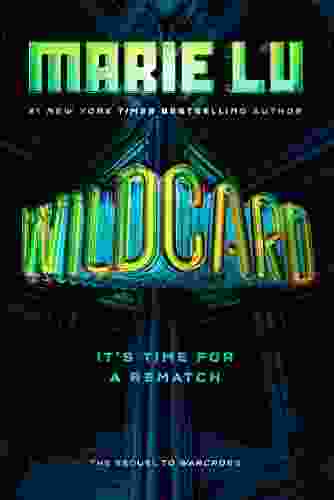
 George Martin
George MartinWildcard Warcross by Marie Lu: The Ultimate Guide to the...
Wildcard Warcross, the...

 Houston Powell
Houston PowellMountaineering Madness: The Deadly Race to Summit the...
The Himalayas, towering over the...
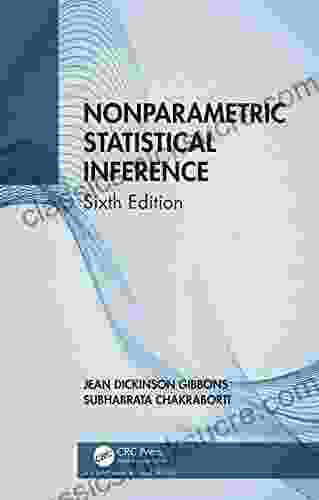
 Levi Powell
Levi PowellNonparametric Statistical Inference: A Comprehensive...
Nonparametric statistical inference is a...
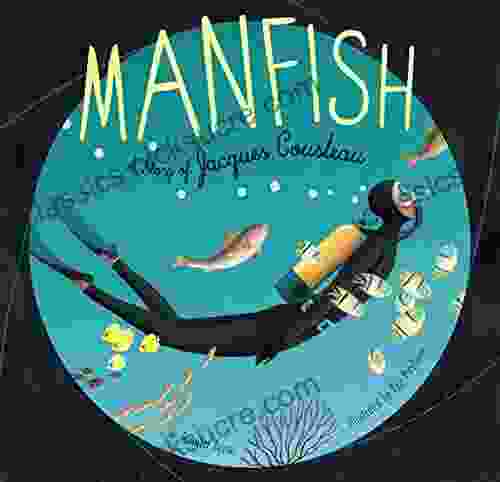
 Salman Rushdie
Salman RushdieManfish: The Extraordinary Story of Jacques Cousteau, the...
Early Life and Diving Experiments ...

 Ross Nelson
Ross NelsonThe Sweet Spot: Great Golf Starts Here
Welcome to The Sweet Spot,...
4.5 out of 5
| Language | : | English |
| File size | : | 2067 KB |
| Text-to-Speech | : | Enabled |
| Screen Reader | : | Supported |
| Enhanced typesetting | : | Enabled |
| Word Wise | : | Enabled |
| Print length | : | 66 pages |
| Lending | : | Enabled |


